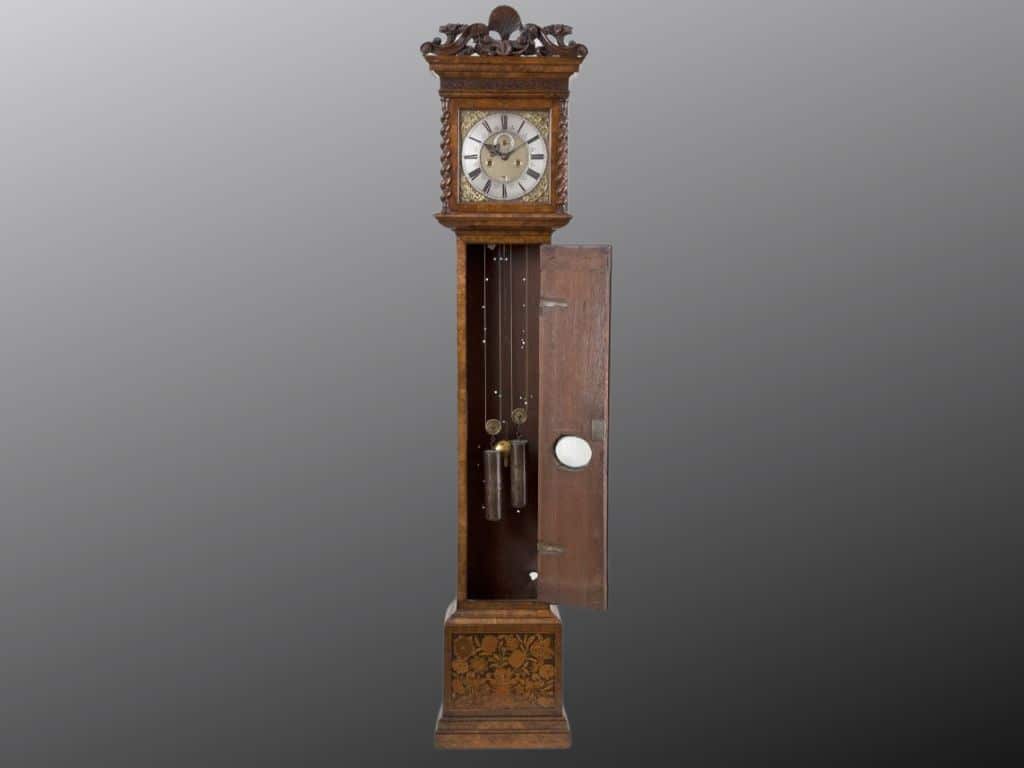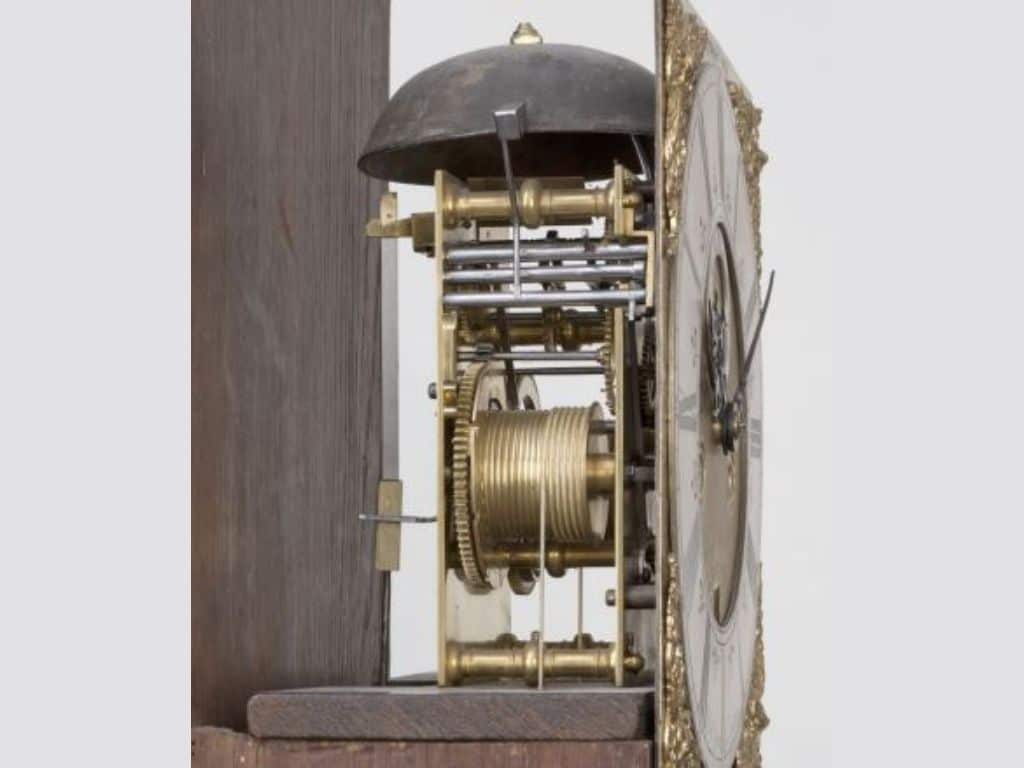





We are absolutely delighted to announce that we have today installed a wonderful Daniel Quare longcase clock, which was kindly donated to the College by Keith Roberts (1976). Now proudly in situ in the Lower SCR, this walnut and marquetry clock dates from around 1695 and stands at a height of 7 foot 5 inches.
Keith said, “I was delighted when I heard from the Rector that Governing Body had accepted my offer to donate one of my much cherished clocks to the College. It now sits splendidly in the recently refurbished Lower SCR where, hopefully, it will mark the passing hours for many years to come. As the College approaches its 600th Anniversary it gives me great pleasure to think that it will be enjoyed by future generations of Fellows and visitors who will have even fewer excuses for being late for a meeting or the weekly tutorial!”
As well as showing the hours and minutes the clock indicates the seconds and the date and it strikes the hours on a bell. The marquetry veneers depict an array of birds and flowers arranged in geometric patterns and the hood is topped with a boldly carved walnut crest, featuring two flower baskets, a scallop shell and delicate foliage.
Daniel Quare (c.1649 - 1724) is one of the most eminent names in English clockmaking from the golden age of horology. Famous for his repeating work in watches and his fine, high-quality clocks, examples of Quare’s clocks can be found in the British Museum and in the Royal Collection. He was made free of the Clockmakers’ Company on 3rd April 1671, moving to Exchange Alley in 1683-86. In 1698 he was admitted to the Court of assistants of the Clockmakers’ Company and became Master in 1708.
George I offered Quare the post of King’s Watchmaker. However, Quare was a Quaker and his strict religious beliefs prevented him from signing the necessary Oath of Allegiance. Nevertheless he enjoyed regular royal patronage and the King allowed him access to the Palace at any time.
Quare’s reputation was not confined to Britain and his royal commissions spanned the continent. Indeed evidence of Quare’s international success can be seen from the list of guests at his children’s weddings, which included important members of society from Italy, Portugal, Sweden, Denmark and Prussia.

